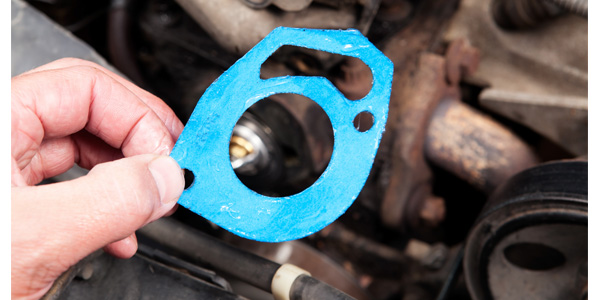
Although you might think gaskets sell themselves, many potential gasket sales are overlooked because the customer didn’t realize they needed certain gaskets to complete a particular repair job.
A leaky intake manifold gasket is a prime example of a repair that may actually require multiple gaskets, not just the one that is leaking. The same goes for head gaskets. Replacing an intake manifold gasket or head gasket requires a lot of engine disassembly, which means more than one gasket usually needs to be replaced to do the repair right.
Many DIYers may not realize that the molded rubber valve cover, timing cover and oil pan gaskets are not designed to be reused. They absorb oil and swell over time, and if an attempt is made to reuse a high-mileage gasket, the installer may run into problems getting the gasket to reseal properly.
Carrier-style intake manifold gaskets also can deteriorate over time, especially around the coolant passageways and intake ports. If reused, they may leak coolant and/or vacuum. The gaskets that seal the upper and lower halves of many intake plenums also are prone to leak if reused, due to heat deformation and deterioration that can occur over time.
Exhaust manifold gaskets are especially leak-prone if an attempt is made to reuse them after a cylinder head or exhaust repair. The scrubbing action produced by repeated thermal expansion cycles can weaken and literally tear such a gasket apart internally, increasing the odds of an exhaust leak if the gasket is reused.
Reusing a head gasket is an even worse no-no for the same reason. Once it has been torqued down, it may be permanently deformed (including MLS steel head gaskets) and will not reseal properly if reused.
Composite fiber gaskets and cork gaskets used for valve covers, timing covers, oil pans and throttle bodies also take a heat set over time and lose their ability to maintain the elasticity that is necessary to provide a leak-free seal.
The best way to sell gaskets is to discuss the repair with your customer to find out what they are replacing, and what gaskets and seals they may need to complete the repair. A gasket kit that includes all of the commonly replaced gaskets, seals and fasteners for a particular repair job is a better option than trying to assemble a pile of parts piecemeal based on what you or your customer think might be needed. A kit can save a repeat trip back to the parts store for things that may have been overlooked.
Something else to keep in mind is that many aftermarket gaskets are better than the OEM gaskets they replace. Some OEM gaskets turn out to have design shortcomings that may result in a high failure rates after so many years or miles of service. Aftermarket gasket engineers look at such failures to determine why the OEM gaskets are failing and what can be done to improve the gasket so a replacement gasket will be more robust. Sometimes the “cure” involves a change to better materials, additional reinforcements or a complete redesign of the gasket. The end result can be a much improved gasket that hopefully won’t allow a repeat failure. Consequently, if a better replacement gasket is available for a “problem” application, be sure to recommend it.
In addition to the gaskets themselves, most repairs that involve replacing major gaskets also involve changing or replacing related fluids, filters and parts (including fasteners such as TTY head bolts, which should NOT be reused). A head gasket repair also will require antifreeze, and probably new hoses and clamps. An oil and filter change also may be a good idea if the old gasket was leaking coolant into the crankcase. The same goes for an intake manifold gasket repair.











